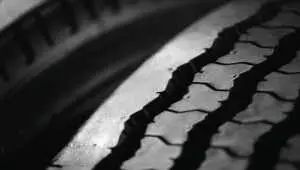Share on Social Media:
The Top 5 Rubber Producing Countries
| Country | Production 2011 (metric tonnes) |
% of World Total | Percent Change (from 2010) |
|
|---|---|---|---|---|
| 1 | Thailand | 3,348,897 m/t | 29.6% | + 9.73% |
| 2 | Indonesia | 3,088,400 m/t | 27.3% | + 12.92% |
| 3 | Malaysia | 996,673 m/t | 8.8% | + 10.86% |
| 4 | India | 891,344 m/t | 7.9% | + 3.40% |
| 5 | Viet Nam | 789,635 m/t | 7.0% | + 5.04% |
 Special Report
Special Report
- About 48% of the global demand for natural rubber comes from China, India and Malaysia which are three major natural rubber consuming countries within the ANRPC (Association of Natural Rubber Producing Countries). Natural rubber and the different types of synthetic rubbers are used in many different end-products. The most important is the tire sector taking about half the total elastomer consumption. The other category, general rubber goods, includes hoses, belting, footwear, surgical goods, and rubberized cloth. (d.), (a.)
- Commercially, natural rubber is obtained almost exclusively from Hevea brasiliensis (genus Hevea, family Euphorbiaceae), a tall softwood tree indigenous to Brazil. Industry botanists have concentrated their efforts mostly on this species. The world rubber industry began to develop in the 1800s, with the invention of the masticator and the vulcanization process (see the table below for an overview of major technical achievements in the rubber industry). Demand for rubber grew rapidly with the invention of the solid and later the pneumatic rubber tire and the demand for rubber insulation by the electrical industry. A notable fact in the early 1900s was also the emergence of production by smallholders, which produced rubber as one amongst several crops. Despite its original commercial development as a plantation crop, by the mid-1930s natural rubber production was evenly split evenly between estates and smallholdings.(a.)
- Unlike synthetic rubber, a capital-intensive industry with few workers, the field production of natural rubber (NR) is a labour-intensive sector involving millions of farmers (mostly women). The standard method in tapping is for one person to tap between 200-300 trees in 3-4 hours. The same person then collects the tapped latex. Tapping and latex collection are normally carried out by paid labourers (estates) or household work (smallholdings). If land values were omitted, labour would constitute the largest single cost per kg in the field production of natural rubber. Although this cost varies considerably among countries (owing to differentials in wages and yields), it tends to be prominent in all contexts. According to data drawn from private records of production and marketing enterprises, management and labour represented over half total direct expenditure on estates and smallholdings in Malaysia in the early 1990s. (b.)
- The supply of natural rubber hinges upon the interplay among several factors, including production capacity, underlying technological change, input and processing costs as well as price differential with synthetic rubber (SR). During 1961-2005, NR production grew on average 3.4% a year. By the early 1960s synthetic rubbers had overtaken natural rubber in volume.
- Thailand could produce only 167,000 tonnes of natural rubber in October 2010 as against 215,000 tonnes expected earlier and 288,000 tonnes produced during the same month in 2009. Preliminary estimates for November indicated that production had fallen to 230,000 tonnes from 335,000 tonnes during the same month in the year before. As harvesting continues to be disrupted due to frequent rains, supply is anticipated to fall during December at 28.2% year-onyear rate. India has further scaled down the country's expectation on natural rubber supply for 2010 to 845,000 tonnes, at 3.0% rise from 2009, from the previously expected 853,000 tonnes (at 4.0% rate) reported in November of 2010. The supply has been badly affected by unseasonal rains during the fourth quarter of 2010 (October to December) which falls in the country's flush season of natural rubber supply. natural rubber supply during the quarter is estimated to fall at 4.6% year-on-year rate.(d.)
- United Nations Conference on Trade and Development. (2011). "INFO COMM. Market Information in the Commodities Area" Retrieved Feb, 2011 from: http://www.unctad.org/infocomm/anglais/rubber/characteristics.htm
- United Nations Conference on Trade and Development. (2011). "INFO COMM. Market Information in the Commodities Area" Retrieved Feb, 2011 from: http://www.unctad.org/infocomm/anglais/rubber/crop.htm
- United Nations Conference on Trade and Development. (2011). "INFO COMM. Market Information in the Commodities Area" Retrieved Feb, 2011 from: http://www.unctad.org/infocomm/anglais/rubber/market.htm
- Association of Natural Rubber Producing Countries. (2010). "Natural Rubber Trends & Statistics". Retrieved Feb, 2011.
Tags:
Crops
Sources: FAOSTAT data, 2013 (last accessed by Top 5 of Anything: Jan 2014).
List Notes: Production is for the most current available year, 2011, in metric tonnes. Rubber defined in this list is natural rubber that is harvested from trees. Last updated January 4th, 2014.
Sources: FAOSTAT data, 2013 (last accessed by Top 5 of Anything: Jan 2014).
List Notes: Production is for the most current available year, 2011, in metric tonnes. Rubber defined in this list is natural rubber that is harvested from trees. Last updated January 4th, 2014.

